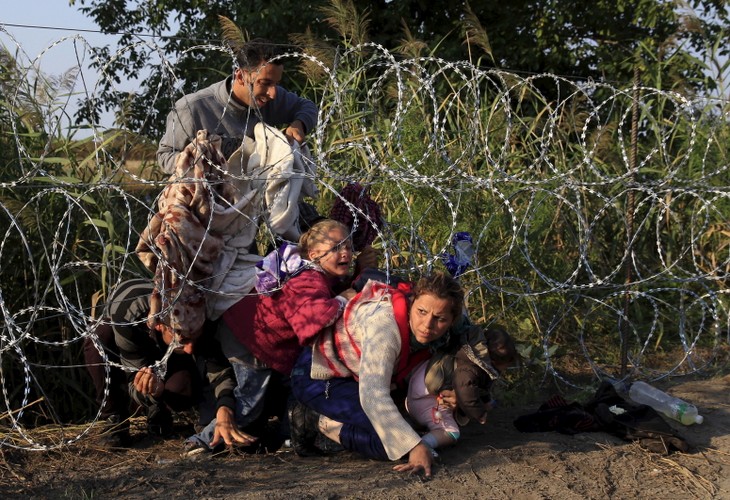(VOVworld) – In 2015, the world saw a record number of people fleeing their countries because of political instability, war, and poverty. Emergency meetings were convened and solutions were put forward, but all have been in vain. Leaders of EU countries have yet to offer a solution to the migrant crisis.
 |
| Syrian migrants cross under a fence as they enter Hungary at the border with Serbia, near Roszke, August 27, 2015. (photo: Bernadett Szabo/Reuters) |
Migrants to the EU exceeded 1 million people in 2015, creating severe socio-economic problems and security threats as terrorists can mingle with the refugees. The UN estimates that one of every 122 people in the world is forced to leave his or her country of origin. An unprecedented wave of migrants has entered Europe which has led to the worst migration crisis since World War II.
Fumbling with solutions
The EU has been staggering by waves of migrants from the Middle East and north African countries. While countries have not fully recovered from the financial crisis, migration has become a socio-economic and security problem.
Some EU countries have imposed measures to limit migrant arrivals by land and sea such as closing borders and installing barbed-wire fences. Emergency meetings failed to reach an appropriate solution.
EU countries have not agreed on a plan to allocate 120,000 migrants. Some western European countries such as Germany, France, and Sweden have accepted migrant quotas, which have been rejected by eastern countries. Hungary said the quota will encourage more migrants to the EU. Barbed-wire fences preventing migrants have divided EU countries and threatened the existence of the Shengen visa-free travel agreement. Following the Paris attacks on September 13, Germany, a leading nation in accepting migrants, had to impose tough measures to protect its border.
Obstacles and differences
The EU, which is known as a unified bloc with many common values, has been divided by the migrant crisis due to cultural and religious differences. Slovakia said it only accepts Christian migrants and Hungary rejected Muslim migrants. Eastern European countries were never colonized and have culturally and religiously homogeneous societies, therefore, it’s hard for them to accept non-European culture. Other countries such as Germany and France have a large community of migrants since the 1980s, so they can easily accept cultural and ethnic diversity. Fears of terrorism and anti-Muslim sentiment spreading across the EU, particularly after the Paris attacks on September 13, are worrisome for EU leaders to accept migrants.
Challenges to maintaining common values
Although EU countries have introduced their plans and policies to take in migrants in 2016, their pending differences will make it difficult to resolve and control the migrant crisis. As the EU is seen as the land of hope, more migrants will pour in to Europe in the next century. EU leaders will have to seek appropriate solutions to the migrant crisis, while preserving the group’s common values and unity in diversity.